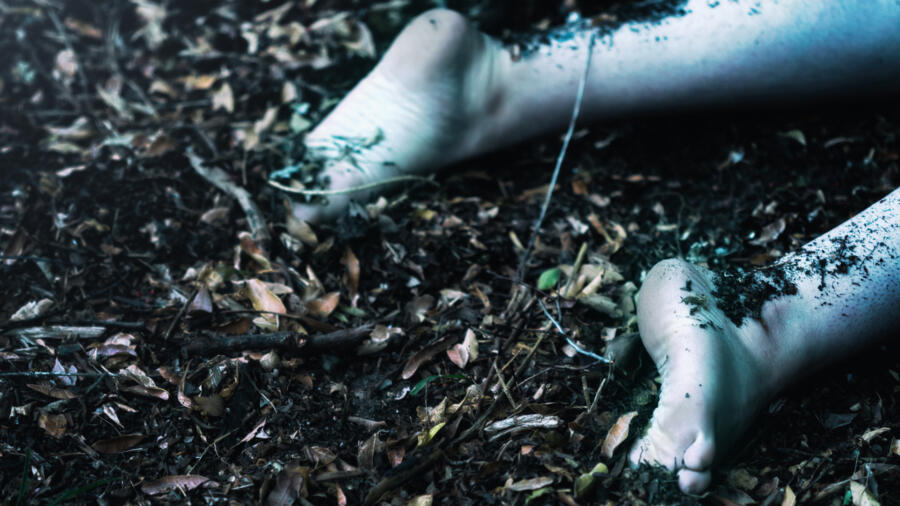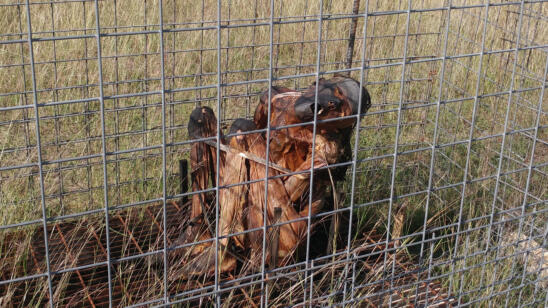You may have heard about body farms, the research facilities where people donate their bodies for scholarly research. But have you ever wondered what actually goes on in these places? What exactly are scientists doing with all these donated bodies? What mysteries are they trying to solve, and why?
Sometimes, scientists and law enforcement agencies have very specific questions they want to try to answer with donated human cadavers. Other times, nature simply runs its course and the researchers get to observe something specific, and sometimes unusual, that could come in handy during a future investigation.
Below are a few specific types of experiments conducted on body farms around the U.S.
What happens to skeletal remains when they get run over by a lawnmower?
Yes, this is a real study, one conducted at the Complex for Forensic Anthropology Research at Southern Illinois University (SIU). When a groundskeeper who was new on the job accidentally mowed over skeletal remains at the body farm, the researchers decided to make the best of the mistake. Though this was a scenario that research hadn’t yet addressed, they felt ‘it could be relevant and useful to law enforcement agencies.
“Prior to that, I had already had two forensic cases where the body had been run over by a lawnmower,” Gretchen Dabbs, co-founder and director of the Complex for Forensic Anthropology Research, tells A&E True Crime. “And in those cases, it was a big commercial tractor lawnmower used by the highway department. ” [The] research ‘is driven largely by cases.”
What happens to a body that’s been encased in concrete?
Inspired by a spate of bodies discovered in concrete in Florida, Dabbs and her team also investigated what happens to bodies when they’re encased in the material.
For this study, the researchers used the bodies of 11 dead pigs. (It’s hard to get that many human body donations at one time and pigs are the most common proxy used by forensic scientists around the world, thanks to their accessibility and relative similarity to humans.) They encased nine pigs in concrete, surrounded one pig on three sides with concrete and allowed one pig to decompose naturally in the open air. The researchers found that the pigs encased in concrete decomposed much more slowly than the pig that decomposed naturally.
“We had one pig that we pulled out after a year and you could still see the folds of its ears and eyelids”, Dabbs tells A&E True Crime. “The lack of oxygen in the environment and the exclusion of insects really slowed down the decomposition.”
Today, they’re continuing this line of research with two human cadavers encased in concrete.
What happens to bodies that are frozen?
You see it on crime dramas all the time: A murderer stores the body of his victim in a deep freezer. But what actually happens to the body in the freezer? And what happens later if the body is allowed to thaw?
Researchers at SIU wanted to find out. They froze, then unfroze, the bodies of pigs to compare their decomposition to pigs that had never been frozen. Now, they’re replicating that study with human cadavers that are roughly the same age and weight.
The answers to the study may provide much-needed information to law enforcement agencies about victims’ time of death. But they’ll also help inform future body farm research moving forward.
“Some of the larger (anthropological research) facilities actually freeze their bodies when they receive them as donations if they can’t use them right away,” says Dabbs. “The question is: Does that affect the process of decomposition? Are you altering decomposition by that simple preservation mechanism?”
What happens when cats or skunks get a hold of dead bodies?
You might be squeamish about the thought of animals scavenging dead bodies, but it happens frequently and is a normal, natural part of the decomposition process. Researchers at the Forensic Investigation Research Station at Colorado Mesa University recently published a study detailing what happens when feral cats come upon bodies. They’ve also documented skunk scavenging.
This type of research helps document and establish patterns that could be useful to investigators. Instead of wasting time trying to figure out what caused certain marks or patterns on skeletal remains, they may be able to compare bones out in the field to these research results.
“Scavenging studies, in particular, are useful in that they can help distinguish between what’s natural and what’s not natural,” says Alex Smith, lab manager for the Forensic Investigation Research Station at Colorado Mesa University. “What’s something a person might have done to that individual as opposed to something that just happens as part of the natural decomposition process in a given environment.”
How can drones be used to find bodies?
Drones are already popular tools among law enforcement agencies for a variety of purposes, including search-and-rescue operations, hazmat situations and when dealing with suspicious packages. But could investigators use them to find missing remains? Researchers at the Forensic Anthropology Center at Texas State University are trying to find out.
Scientists are testing forward-looking infrared cameras and other imaging systems that can detect remains based on temperature. For example, cadavers left out in the open tend to produce higher temperatures than the ambient air temperature around them. Bodies that have been buried in the ground, on the other hand, produce colder temperatures.
“We do a lot of work on how do you detect remains, how do you find missing remains because that’s something we’re asked to do a lot of times—go out on searches,” says Daniel Wescott, director of the Forensic Anthropology Center.
What affects a dog’s ability to find human remains?
Cadaver dogs can be useful tools for law enforcement agencies trying to find human remains. But researchers at Texas State wanted to better understand what can affect a dog’s ability to sniff out dead bodies.
The answer? A whole host of factors, from the time of day to the season to the stage of decomposition. In Texas, for example, the prominent clay soils make it more challenging for dogs to find remains, whereas the sandy soils in Florida tend to make it easier for them. This means investigators in some parts of the country may need to adjust their tactics, such as by moving more slowly or sweeping smaller search areas, to improve the dogs’ accuracy.
Though forensic scientists still have many more research topics they want to explore, these and other studies are already helping investigators in the field better perform their jobs and, ultimately, fight for justice on behalf of victims.
Related Features:
Down on the Body Farm: Bodies ‘Eat Themselves’ While Researchers Watch and Learn
What’s It Really Like at a Forensic Body Farm?
Why It’s OK to Leave Dead Bodies in the Woods, and Other Strategies for Not Messing Up A Crime Scene



